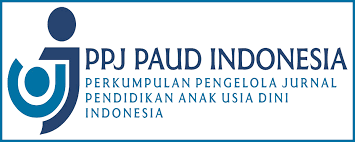PENGAJARAN BAHASA INGGRIS UNTUK ANAK USIA DINI BEBERAPA HAL YANG HARUS DIPERHATIKAN
DOI:
https://doi.org/10.33474/thufuli.v1i2.4940Abstract
The need, awareness, and understanding about the early foreign languages teaching on young learners makes the education experts try to apply English learning and teaching as early as possible for students. Therefore, English has been introduced in formal educational institutions at the level of early childhood. This decision made experts have to consider several things in term of learning and teaching English as a foreign language (EFL) and early childhood as students when a foreign language is introduced and taught at the level of early childhood (young learners), then an understanding of how foreign language acquisition or second language on children (SLA) and learning and teaching foreign languages (Teaching English as Foreign Language / TEFL) in children needs to be understood and considered as a reference for conducting the learning process, so that good and appropriate learning methods can be formulated. In this article, the author tries to elaborate on the process of language acquisition in children (language acquisition), both in their first language (L1) and their second language (L2), as well as how an understanding of these can have a positive interfearence on the formulation and selection of the right method. in the process of learning and teaching English at the level of early childhoo.
References
Barbara, Thomson, PhD (1987). Language is Living: Aguide to Foster Language Development for mentally Retarted Individual. State of Wisconsin: United State office of Education
Chomsky, Noam (2006). Language and Mind. United State Of America: Camdridge University Press.
Devinta P.S, dkk (2018) Mengajar Bahasa Inggris Anak Usia Dini. Malang Jawa Timur: UB Press
Ellis, Rod (1995) The Study of Second Languange Acquisition. Hongkong: Oxford University Press
Madyawati, Lilis . (2016) Strategi Pengembangan Bahasa Pada Anak. Jakarta : Kencana PT
Santrock, J. (2007). Adolesence†Fifth Edition. New York, NY: McGrawHill Company Inc.
Schutz, R.(2006).Stephen Krashni's Theory of Second language Acquisition. Diakses dari: http://www.sk.com.br/sk-krash.html.
Sigel, I., & Cocking, R. (2000). Cognitive Development from Childhood to Adolescence: A Constructivist Perspective’ p. 5. Diakses dari: http://fccl.ksu.ru/papers/gp002.htm
Stakanova E., & Tolstikhina, E. (2014). Different Approaches to Teaching English As A Foreign Language to Young Learner.Procedia Social and Behaviour Science Vo. 146. pp. 456-460. Diakses dari: www.sciencedirect.com
Valipour, V., & Davatgari, H. (2014). Differences between Children and Adults in Foreign Languange Pronunciation and Gramatical Rules Learning.Indian Journal of Fundamental and Applied Life Sciences Vol. 4 (S3), pp. 195-198. Diakses dari: www.cibtech.org/sp.ed/jls/2014/03/ jls.htm.






